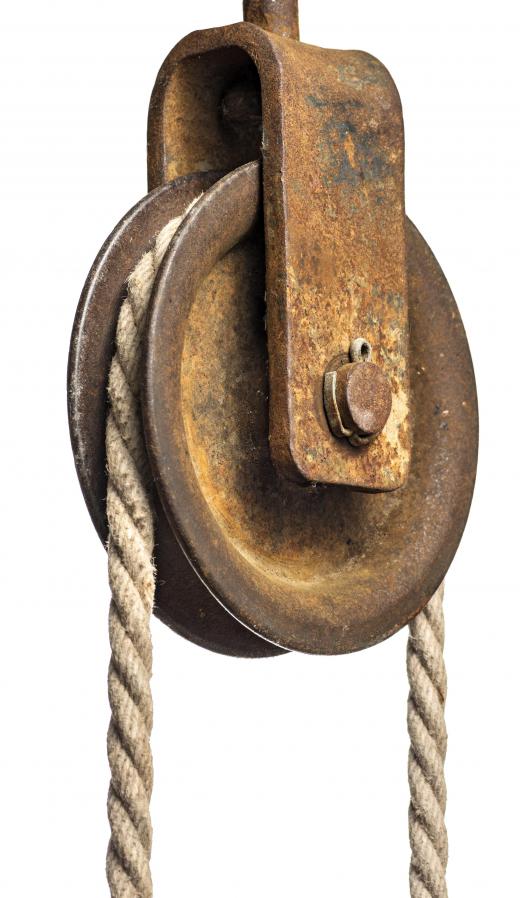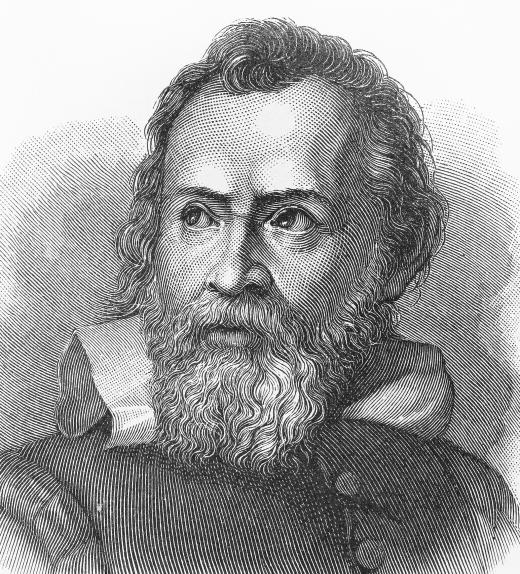What is a Simple Machine?
 Dana Hinders
Dana Hinders
In physics, a machine is a device that makes it easier to perform work by either transferring a force from one point to another, increasing the distance or speed of a force, increasing the magnitude of a force, or changing the direction of a force.
Although technology is constantly changing, it's helpful to remember that all machines are made of the same basic parts. The term simple machine is used to refer to devices that have few moving parts, if any, but use energy to work. If two or more simple machines are joined together to make a single mechanism, the resulting device is known as a complex machine.

The six simple machines are the screw, inclined plane, wedge, lever, pulley, and wheel and axle. Within this group, you can break down simple machines into two smaller categories. The inclined plane, wedge, and screw are dependent on the vector resolution of forces, while the lever, pulley, and wheel work because there is an equilibrium of torques.
An inclined plane is a slanting surface that connects a lower level to a higher level. A wedge is an object with a slanting side that ends in a shape point to help you cut material apart. A screw is essentially an inclined plane wrapped around a pole, making it possible to hold materials together.

A lever is a bar resting on a fulcrum that can lift or move loads. A pulley is a wheel with a groove between two flanges around its circumference and a cable, belt, or rope running inside the groove. A wheel and axle is a modification of a pulley in which a wheel is attached to a shaft, such as on a pair of roller skates.
The idea of a simple machine was first discussed by the ancient Greek philosopher Archimedes. However, the complete theory of a simple machine as an object that transforms energy is actually attributed to Italian scientist Galileo Galilei in his 1600 publication of Le Meccaniche (On Mechanics).

While the traditional definition of a simple machine includes six separate machines, it is interesting to note that not everyone agrees with this theory. For example, there are people who argue that both a pulley and a wheel and axle can be viewed as unique types of levers. There are also people who believe that hydraulic systems are a type of simple machine as well, since they provide amplification of force.
AS FEATURED ON:
AS FEATURED ON:













Discussion Comments
A machine is a device which can make our work easier by applying a smaller force.
@hamje32 - That sounds fascinating! I think that as a whole, our ideas about what a machine is are influenced a lot by our modern technology. At its time, that machine was probably considered awe-inspiring. When they were first invented, cars were considered amazing stuff. Now we have things like microchips and nanopaint and those seem like the amazing new technology.
Every time we get something new cooking up, the original machines look less and less sophisticated, until our modern definition of machine doesn't even apply to what people could only call a state of the art machine back in its day.
I remember the day I first discovered that a see-saw was considered a simple machine -- a lever with a fulcrum, to be precise. I was just a kid, maybe ten years old at the time, and I associated the word "machine" with mechanical things like robots.
Now that I think of it, is a chisel considered a wedge simple machine? Or would it be disqualified for needing a hammer to pound it in to work?
Ah, yes, simple machines. I used to be obsessed with simple mechanical machines such as levers and pulleys as a kid, all thanks to Rube Goldberg.
I think many other kids were also captivated by the intricacies of Goldberg inventions, which are drawings of a bunch of simple machines such as levers and pulleys being used together to perform a simple task -- such as pouring coffee into a cup -- "automatically". They always had some sort of trigger to start them that a person had to do by hand, though, like pull a lever or drop a weight.
Considering how beloved Rube Goldberg and his inventions are to kids everywhere who love simple machines, I think it's a great irony that his designs are not simple machines. Since they string together many more than two or three simple machines, Rube Goldberg inventions are in fact complex machines, by the article's definition.
Oh, well. I still love Rube Goldberg inventions, and he's a great example of how to use your simple machines for a big goal. That, and let's face it, Rube Goldberg just had to be the inspiration for the board game Mouse Trap, so there's another reason to love him.
My mom taught a class about simple machines once. It was for young kids, and they got to use LEGO pieces to build lever, pulleys and such and then engaged in various simple machine activities together as a class. The kids really loved it -- it was so much like playing that they didn't even realize they were learning a lot in the process.
Simple machines are really important. If you have a knowledge of how things like leverage operate, then if ever you're in a survival situation where you need to move something you cannot physically lift on your own, constructing a simple machine or two will make it possible.
@Mammmood - Think about a wedge simple machine too. The wedge is kind of like a ramp or a lever except that you insert it in between two other objects.
You can use a wedge to split wood for example. Hammer the wedge and it will exert horizontal forces that will help to split the wood apart.
@nony - I remember watching this TV show about the world’s oldest computer. It was called the Antikythera mechanism, and it resembled an ancient clock.
As a simple machine gears were used in this mechanism to enable it to determine astronomical movements and such. I remember when I first heard about the device, I thought it shouldn’t be called a computer.
But when you think about it, a computer simply does calculations, and that’s what this thing did, and it did it using simple machines.
@Mammmood - I agree. When we look at some of the great ancient architectural wonders of the world and ask how they were built, we are left to consider simple machines as our only options.
The inclined plane is said to be one of the machines used to build the pyramids for example. For another simple machine levers were probably used as well, but I think that the ramp is one of the most important machines used for getting those stones up to the top of the pyramids.
I’ve never thought of an inclined plane as a simple machine because, by appearances anyway, it doesn’t actually “do” anything.
But of course if you put an object on it, the object will move, and so I guess it makes sense to call it a machine.
When I was helping my daughter in physics we did a lot of problems with forces that involved inclined planes. It was clear from the problems that various forces were involved with the inclined plane, including gravity, normal force and things like that.
I think I would view the inclined plane as the simplest of the simple machines because of its spare design, and because you find it so abundant in nature. I think the ramp is one of the best simple machine examples that you can find.
Post your comments